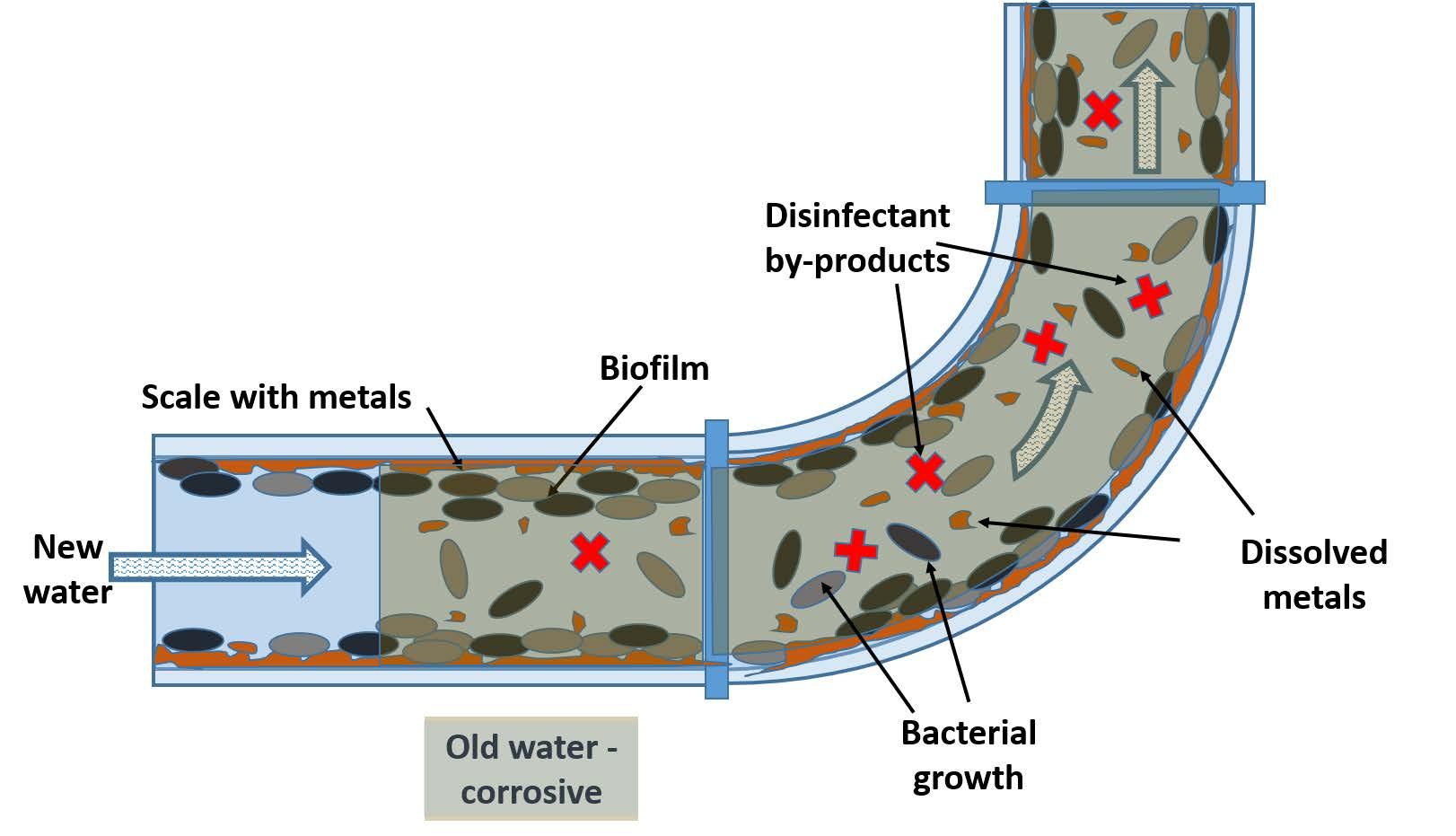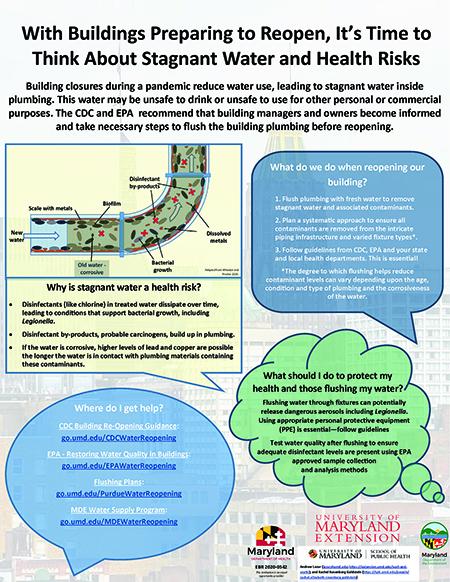
EBR 2020-0542 | June 2020
With Buildings Preparing to Reopen, It’s Time to Think About Stagnant Water and Health Risks
Building closures during a pandemic reduce water use, leading to stagnant water inside plumbing. This water may be unsafe to drink or unsafe to use for other personal or commercial purposes. The CDC and EPA recommend that building managers and owners become informed and take necessary steps to flush the building plumbing before reopening.
Why is stagnant water a health risk?

- Disinfectants (like chlorine) in treated water dissipate over time, leading to conditions that support bacterial growth, including Legionella.
- Disinfectant by-products, probable carcinogens, build up in plumbing.
- If the water is corrosive, higher levels of lead and copper are possible the longer the water is in contact with plumbing materials containing these contaminants.
What do we do when reopening our building?
- Flush plumbing with fresh water to remove stagnant water and associated contaminants.
- Plan a systematic approach to ensure all contaminants are removed from the intricate piping infrastructure and varied fixture types.*
- Follow guidelines from CDC, EPA and your state and local health departments. This is essential!
*The degree to which flushing helps reduce contaminant levels can vary depending upon the age, condition and type of plumbing and the corrosiveness of the water.
What should I do to protect my health and those flushing my water?
Flushing water through fixtures can potentially release dangerous aerosols including Legionella. Using appropriate personal protective equipment (PPE) is essential—follow guidelines.
Test water quality after flushing to ensure adequate disinfectant levels are present using EPA approved sample collection and analysis methods.
Where do I get help?
- CDC Building Re-Opening Guidance:
go.umd.edu/CDCWaterReopening - EPA - Restoring Water Quality in Buildings:
go.umd.edu/EPAWaterReopening - Flushing Plans:
go.umd.edu/PurdueWaterReopening - MDE Water Supply Program:
go.umd.edu/MDEWaterReopening




ANDREW LAZUR
Well, Septic Systems and Water Quality
lazur@umd.edu
RACHEL ROSENBERG GOLDSTEIN
https://sph.umd.edu/people/rachel-e-rosenberg-goldstein
This publication, With Buildings Preparing to Reopen, It’s Time to Think About Stagnant Water and Health Risks (FS-2022-0542) is a part of a collection produced by the University of Maryland Extension within the College of Agriculture and Natural Resources.
The information presented has met UME peer-review standards, including internal and external technical review. For help accessing this or any UME publication contact: itaccessibility@umd.edu
For more information on this and other topics, visit the University of Maryland Extension website at extension.umd.edu
University programs, activities, and facilities are available to all without regard to race, color, sex, gender identity or expression, sexual orientation, marital status, age, national origin, political affiliation, physical or mental disability, religion, protected veteran status, genetic information, personal appearance, or any other legally protected class.